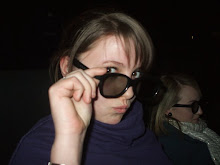“Where there is music, there’s love” - Written on a wall sampler in a diner, in ‘For Me and My Gal’
“Typically, the biggest difference between film and stage musicals is the use of lavish background scenery which would be impractical in a theatre. Musical films characteristically contain elements reminiscent of theatre; performers often treat their song and dance numbers as if there is a live audience watching. In a sense, the viewer becomes the deictic audience, as the performer looks directly into the camera and performs to it. The 1930s, 1940s, and 1950s…”
http://www.freebase.com/view/en/musical
Musicals as a genre have developed in vast amount since they were first created in the late 1920’s and early 30’s. Broadway was unable to compete with Hollywood’s large budget and salaries and so became standard fare for all theatres, even the expensively built ones.
There are three different kinds of musicals, Musical Play, Musical Revue, and Pseudo comedies. A musical play is where the storyline is supported by songs, not the other way round, and there are more pieces of drama and dialogue than songs. An example of this is
‘ The Rocky Horror Picture Show’
A musical revue is where the musical is communicated purely through the art of song. No words are spoken within this musical, only singing, an example of this is ‘Cats‘ as there is no form of speech within it. Even Rum Tum Tugger’s meow’s are in tune.
.Pseudo comedies are where random pieces of entertainment are inserted into the middle of the musical for some comedy relief. For example, in ‘Sweet Charity’ when the posh party animals suddenly break out in to a series of strange dances.
The Aloof, The Heavyweight, The Big Finish.
One of the most well known film musicals is ‘Moulin Rouge’, which set the bar for all new film musicals of this generation.
“That same year, the even stranger Moulin Rouge (2001) captured the imagination of millions of filmgoers by presenting a pedestrian love story through a wild mixture of musical sequences and eye-catching images. Director Baz Luhrmann threw together a dizzy hodgepodge of old and new pop songs, and kept the screen whirling with MTV-style quick cut editing. Nicole Kidman and Ewan Macgregor looked and sounded sexy in musical sequences that flew by at such speed that their lack of musical talents hardly mattered. Most critics and film goers overlooked the often confusing pace and turned Moulin Rouge into the first real musical screen hit of the new century.”
http://www.musicals101.com/2000film.htm
In 1927, ‘Showboat’ what can be described as the first musical play, was brought to the stage by Oscar Hammerstein II. The musical brought about ideas of racism and culture as this large showboat travelled down the Mississippi river bringing entertainment to all. However, when one of the female performers is found to have had a black mother, she is cast off the boat. And of course, with all musicals, there is a forbidden love story that triumphs over all in the end.
All of this taking place on the boat, you can imagine how ambitious this was for the worlds first musical. ’Show Boat’ set the standards from here onwards, and created the convention of having a serious underlying storyline. ’Showboat’ commented on how, even though Magnolia was white, she was still treated differently due to her black origins. Although racism was an obvious problem in the 1920’s, it was never really addressed by anyone, but for the first musical to come along and comment about the injustice of it was a very risky thing to do. Considering it was also the first musical, by making racism a large part of the storyline, Oscar Hammerstein II could have doomed musicals as a genre forever, however, by placing such a taboo narrative within, has made it a convention for the musical genre.
Tuesday, 23 March 2010
Subscribe to:
Post Comments (Atom)

No comments:
Post a Comment